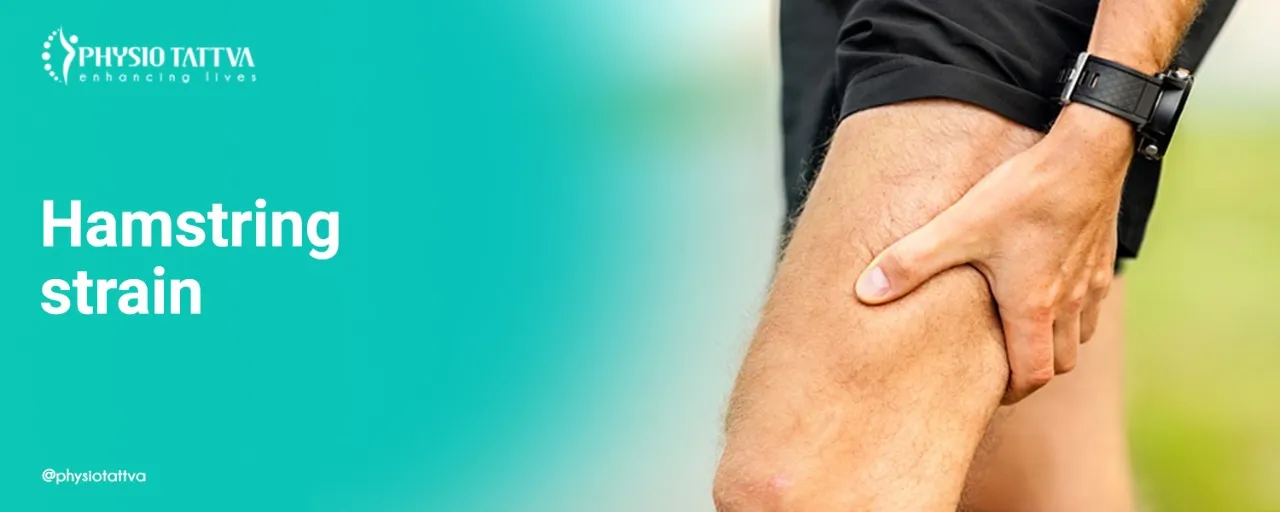Understanding Sciatica: Causes & Symptoms
Sciatica is the pain that radiates along the path of the sciatic nerve, which runs from your lower back through your hips and down each leg. When the sciatic nerve gets compressed or irritated, it can cause anything from a mild ache to sharp, burning pain.
Sciatica isn’t a condition itself but a symptom of an underlying issue, such as spinal stenosis or herniated disc. Laser therapy for Sciatica is becoming a popular non-invasive treatment option known for its ability to reduce inflammation and aid healing.
Common Symptoms of Sciatica
The most common symptom of sciatica is a sharp pain that radiates from the lower back down through the leg, usually affecting only one side of the body. You might also experience numbness, tingling, or a burning sensation in the affected foot or leg.
The pain can worsen when you sit, cough, or sneeze, and it may vary in intensity from a mild ache to severe discomfort. In some cases, muscle weakness in the leg or foot can make it difficult to move or stand, adding to the challenges of daily life. For such cases, laser therapy for Sciatica can help alleviate these symptoms, offering relief and improving mobility.
Common Causes of Sciatica
In most cases, Sciatica is caused by compression or irritation of the sciatic nerve, commonly from a herniated disc, bone spur, or spinal stenosis. These conditions can create pressure on the nerve, leading to inflammation and pain.
Other factors, such as muscle imbalances, injuries, or even prolonged sitting, can also contribute to sciatica. In some cases, pregnancy or being overweight can increase the risk of developing sciatica by adding extra pressure on the lower back.
Types of Sciatica Treated with Laser Treatment
Laser therapy for Sciatica is effective in treating different forms of the condition, including acute, chronic, and radiating sciatica.
- Acute sciatica involves sudden, intense pain often triggered by an injury or a slipped disc.
- Chronic sciatica is characterised by long-term discomfort, which may flare up periodically.
- Radiating sciatica causes pain that travels along the nerve, often reaching the foot.
Laser therapy is a treatment that can be used in many different ways for different sciatica types and helps patients find relief without invasive procedures.
Acute Sciatica
Acute sciatica occurs suddenly, often after an injury, heavy lifting, or awkward movement. The pain is typically sharp and intense, radiating from the lower back down one leg. It may be accompanied by muscle spasms or a burning sensation. Although acute sciatica can be incredibly painful, it usually resolves on its own within a few weeks.
However, early treatment is crucial to manage the pain and prevent it from becoming chronic. Rest, ice, and anti-inflammatory medications can help, but seeking professional care, such as laser treatment for Sciatica, ensures that the underlying cause is addressed correctly and reduces the risk of long-term discomfort.
Chronic Sciatica
Chronic sciatica is a long-lasting condition wherein the pain lingers beyond three months. The discomfort may further evolve into sharp, radiating, and disabling pain that affects daily living.
Unlike acute sciatica, chronic sciatica usually requires continuous treatment directed to lessen its symptoms, mainly in terms of enhancing mobility. It may present periods of fluctuating intensities, leaving one in relief at times and flare-ups the next.
The agony of chronic sciatica can be so difficult to live with, but regular physiotherapy and some lifestyle modifications do go a long way in reducing this agony. Laser therapy for Sciatica is an effective treatment option that helps alleviate pain and inflammation and provides relief.
Sciatica from Spinal Stenosis
Sciatica caused by spinal stenosis occurs when the spaces within the spine narrow, putting pressure on the sciatic nerve. This narrowing often results from ageing and can lead to pain, numbness, or tingling that radiates from the lower back down the legs.
The pain can become more intense with extended standing or walking and can improve when sitting or bending forward. Spinal stenosis-related sciatica tends to develop gradually and can become chronic if left untreated.
Sciatica Due to Piriformis Syndrome
Piriformis syndrome occurs when the piriformis muscle, located deep in the buttocks, irritates the sciatic nerve, leading to sciatica. This type of sciatica is characterised by pain that starts in the buttocks and radiates down the leg.
Prolonged sitting, running, or climbing stairs can aggravate the condition, making the pain worse. Unlike other types of sciatica, piriformis syndrome is caused by muscle irritation rather than spinal issues.
Sciatica from Spondylolisthesis
Spondylolisthesis occurs when one vertebra slips forward over the one below it, potentially compressing the sciatic nerve and causing sciatica. This condition can lead to lower back pain, stiffness, and radiating pain down the legs.
Sciatica from spondylolisthesis often worsens with movement, particularly activities that involve bending or twisting the spine.
Benefits of Laser Treatment for Sciatica
Laser therapy for Sciatica offers several benefits for managing it, particularly for those seeking a non-invasive treatment option. By using targeted light energy, laser therapy reduces inflammation at the cellular level, helping to relieve the pain without the need for medication or surgery.
It improves blood circulation, accelerates tissue repair, and can provide quick relief from sciatica symptoms. Laser therapy is also versatile, effective for various types of sciatica, including acute, chronic, and sciatica caused by conditions like spinal stenosis or spondylolisthesis.
Pain Reduction
The laser’s light energy penetrates deep into the tissues, reducing inflammation and relieving pressure on the sciatic nerve. This results in noticeable pain relief, often after just a few sessions. Unlike painkillers, which only mask the symptoms, laser therapy addresses the underlying cause of the pain.
Promotes Tissue Healing
Laser therapy for Sciatica promotes tissue healing by stimulating cellular activity and improving blood circulation in the affected area.
The light energy from the laser accelerates the body’s natural healing process, helping damaged tissues recover more quickly. This is particularly beneficial for sciatica, where inflammation and tissue damage contribute to the pain.
Cost-Effective in the Long Term
While the initial cost of laser treatment for Sciatica might seem high, it’s cost-effective in the long term. Laser therapy can reduce the need for ongoing pain medications, physical therapy, or even surgery as it helps in addressing the problem at a more fundamental level.
Fewer doctor visits, less reliance on drugs, and a quicker return to daily activities all contribute to saving money over time.
Improved Mobility
Laser therapy for sciatica gradually helps improve flexibility and strength, enabling freer and more comfortable movement. As the pain subsides, you can begin gentle strengthening exercises that enhance muscle stability, reduce nerve pressure, and lower the risk of future injuries.
Quick and Convenient
Each session typically lasts between 10 to 30 minutes, depending on the area being treated, and there’s no downtime afterwards. You can fit it into your schedule easily, whether you’re on a lunch break or between other appointments.
With the non-invasive nature of laser therapy for Sciatica, you won’t need to recover from any incisions or injections. It’s an efficient way to manage your sciatica pain, allowing you to get back to your daily activities without disruption.
Holistic Approach and Non-Invasive Treatment Options
Laser treatment for Sciatica is part of a holistic approach to treating the condition, focusing on non-invasive methods that promote healing without surgery or medication.
It targets the root cause of pain, working alongside other treatments like physiotherapy, stretching, and lifestyle changes. This approach minimises the risks associated with more invasive procedures and offers a comprehensive way to manage sciatica.
When to See a Healthcare Professional for Sciatica?
It’s important to see a healthcare professional if your sciatica pain persists for more than a few weeks, worsens, or significantly impacts your daily life. Additionally, if you experience severe symptoms like muscle weakness, loss of bladder or bowel control, or numbness in the leg, seek medical attention immediately.
A healthcare professional can diagnose the underlying cause of your condition and recommend appropriate treatments, such as laser therapy for Sciatica, physical therapy, or other interventions. Early intervention can prevent the condition from worsening and help you manage pain more effectively.
What to Expect During Laser Treatment for Sciatica
During a laser therapy visit, you can expect a straightforward and painless process. After discussing your symptoms and treatment goals, the therapist will position the laser device over the affected area. You may feel a slight warmth, but the procedure is typically comfortable.
Sessions usually last 10 to 30 minutes, depending on the area being treated. There’s no need for anaesthesia or recovery time, so you can return to your normal activities immediately after the session. Your therapist may recommend multiple sessions over several weeks for the best results.
Risks and Contraindications of Laser Treatment for Sciatica
Laser treatment for sciatica is generally considered a safe, non-invasive therapy when performed by qualified physiotherapists. However, like any medical procedure, it’s not suitable for everyone. Understanding the possible risks and contraindications ensures your safety and best outcomes.
Common contraindications include:
- Active infection or open wounds at the treatment site
- Pregnancy (especially over the lumbar or pelvic region)
- Presence of pacemakers, metal implants, or electronic devices near the treatment area
- Malignant or cancerous lesions near the site
- Uncontrolled neuropathy or reduced skin sensation
- Severe vascular disorders or bleeding conditions
Before beginning laser treatment for sciatica, always consult a certified physiotherapist or healthcare professional to confirm suitability. They will assess your medical history and design a personalised treatment plan that prioritises both safety and effectiveness.
How Much Does Laser Treatment for Sciatica Cost in India?
The real costs of laser treatment for sciatica vary based on the number of sessions needed, the provider’s fees, and your location. Each session may cost anywhere between INR 500 to INR 1500. Although the upfront cost may seem high, it’s important to consider the long-term benefits, such as reduced reliance on medications and avoidance of surgery. It is an investment towards good health.
Session Costs & Packages
Most patients require 6–12 sessions for noticeable improvement. Clinics may offer package options that reduce per-session cost. These packages often include physiotherapy support and follow-up consultations for comprehensive recovery.
What Affects Total Cost
The total cost of laser treatment for sciatica depends on several factors, including:
- The number of sessions recommended by your physiotherapist
- The clinic’s location and reputation
- Additional physiotherapy or rehabilitation sessions included in your plan
Insurance & Payment Options
Insurance coverage for laser treatment for sciatica can vary. Some clinics offer flexible packages, EMIs, or discounts for multiple sessions to make therapy more affordable. It’s best to check with both your insurer and the physiotherapy centre to understand coverage and available payment options.
Choosing the Right Laser Therapy Centre Near Me
When choosing a laser therapy centre near you, start by researching local options and reading reviews from other patients. Look for a centre that specialises in treating sciatica, especially those that offer laser therapy for Sciatica and has experienced professionals on staff.
Consider the convenience of the location, the availability of appointments, and whether they offer personalised treatment plans. It’s also helpful to visit the centre in person to see the facilities and ask about the technology they use.
What to Look for in a Laser Treatment Provider for Sciatica?
When selecting a laser therapy provider, consider their experience, qualifications, and specialisation in treating sciatica. Check if they have the necessary certifications and whether they use up-to-date technology, such as Laser treatment for Sciatica.
It’s also important to evaluate their approach to treatment—do they offer a comprehensive plan that includes assessment, therapy, and follow-up care?
Consider the provider’s communication style and whether they take the time to explain the treatment process and answer your questions. A good provider will work with you to create a treatment plan tailored to your specific needs, ensuring effective and safe care.
Questions to Ask Your Physiotherapist
When consulting with your physiotherapist, ask about their experience in treating sciatica and the success rates of their treatments. Inquire about the number of laser therapy sessions you might need and what results you can expect.
Ask if they offer any complementary treatments other than laser therapy for Sciatica, such as exercises or stretches, to enhance the effectiveness of laser therapy. Clarify any potential side effects and how they will monitor progress throughout the treatment.
It’s also helpful to discuss the costs involved and whether insurance might cover the therapy. Asking these questions ensures you’re well-informed and comfortable with your treatment plan.
Why Choose Physiotattva for Laser Treatment for Sciatica?
Choose Physiotattva for your laser therapy needs because we offer specialised care and laser therapy for Sciatica. Our team includes experienced physiotherapists who tailor treatments to address the root cause of your pain.
Physiotattva combines laser therapy with other proven techniques to provide a comprehensive approach to managing sciatica. We have a transparent policy that will keep you informed about the expenses involved, and our team will work towards giving you the best possible care. Get in touch today.
At Physiotattva physiotherapy clinics in Bangalore and Hyderabad, you receive personalised care tailored to your specific needs, ensuring effective results and comfort throughout your journey to recovery.
Don’t wait to start your recovery! Get in touch with Physiotattva for more details! Contact us at +91 89510 47001.




-Physiotherapy.webp)
-for-Shoulder-Pain-Relief.webp)
-for-Knee-Pain-Relief.webp)


-for-Back-Pain-Relief%20(1).webp)





.webp)










.webp)


.webp)





.webp)
.webp)


.webp)
.webp)

.webp)

.webp)

.webp)
.webp)

.webp)








.webp)
.webp)

.jpeg)



.webp)
.webp)




.webp)
.webp)












.png)









%20(1)-p-3200.jpeg)


.jpg)
.webp)
.webp)
.webp)



